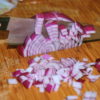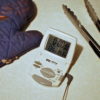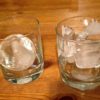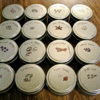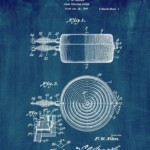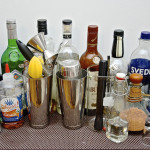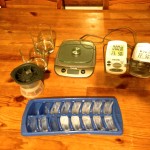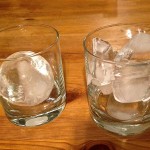
One of the biggest inventions in the history of mankind is the use of fire for food. It opened a whole new horizon to food that prior to heating was not even imagined as eatable. Not only that, but heating food made it a lot safer and reduced significantly the food poisoning that as you can imagine back then it was a huge cause of death. Prehistoric people use to eat other than game corpses and meat that was rotting for days. Heat improved the quality of the meat and it’s safety.
And we came long way since then, and the once cooked to death meat, found fans that want it medium rare, rare, medium, juicy, red or pink. The modern farms over meat that is a lot safer and much more controlled so it can be eaten under these conditions. The only problem is when the meat is rare, medium rare, medium juicy, red, pink? And how do you get the nice crust on the top? And why does sugar caramelizes? And why coffee is better when roasted? It must be magic. How else could you explain the transformation of food could be explained? At least this was until Maillard a french chemist 1912, he undertook studies of the reaction between amino acids and sugars. According to these reactions, that are rather complex, under heat, the aminoacides react with sugars, and that is what gives rise to more complex molecules that actually responsible for this transformation of food. But the one thing that is key for that to happen is temperature control. Cooking and temperature control goes hand in hand with the modernization of cooking. From the double boilers to the sun-drying all that needed to be achieved is temperature control. And that’s where the amazing invention of thermometers is so significant.
We will discuss the different types of thermometers, how they work and how to select them. There are four major types of thermometers: Probe thermometers, Oven thermometers, Candy/Frying thermometers and Freezer thermometers. Although the major difference is the temperature range, the mechanism that they operate on is different. So let’s get started!

The probe thermometers: They come into two basic types. One that is a small probe with a digital reader attached to one end, and one like the one in the picture that consists on a probe that is connected with a cable to a digital reader. In all both cases the principle of operation is called thermocouple. Any metal (or alloy) will develop a small electric potential when the two ends are at different temperatures. Of course in order to know the temperature at one end you need to know the temperature at the other end. If you, however use to different metals and take the potential difference, assuming that the temperature at both ends are the same then you don ‘t need a reference point just the potential difference. Just have a look at the diagram here. Green is metal one, and Red is metal 2.

The potential difference will be ΔV1=αΔT while for the other metal will be V2=βΔT. The measured potential will de dV=ΔV1-ΔV2=( α-β )ΔΤ=( α-β )Τ1-( α-β )Τ2 and because T2 is considered the cold part combined with the ( α-β ) factor that is also small can be omitted so finally we get
dV2=( α-β )Τ1 or T=dV / ( α-β ).
The accuracy and the range of the temperature depends on the metals and the calibration. What is important however is that it is accurate in a very wide range of temperatures and that is that is the most important advantage. On the drawback the only disadvantage is the reliability of the steps. So although most of them claim to read with accuracy of .1C or .6F that is most likely not true. But for cooking this is not as bad, 1C is all you need that is quite reliable measurement. They are great for using in the oven while a piece of meat is cooking, since it has temperature alarm and they usually come with a timer or a clock that is super valuable. You should avoid however measure oven temperatures and anything above 400F/200C. They will probably mess up the thermometer. Also be very careful when you are measuring meat temperature in the oven that the grill is on. Touching that heating element at the temperature of 600F/315 C will damage it permanently, especially in these models that the cable is made of silicone. If you buy one thermometer only this is what you should buy. It will give you readings with from places you cannot take any.

The oven thermometers: They are used only for one purpose and that is the temperature in the oven. This is extremely important from baking, where setting a cake batter in a cold, or an unevenly heated oven can ruin it. Being able to place at various spots in the oven you can get a more precise reading. Ovens are also known to cycle, based on the internal thermostat, which by the way is the same principle. So the will turn off when the desire temperature is reached, and turn on again when it falls bellow the desired temperature. But the desired temperature is measured at a single spot in the oven; not exactly what is known as precise temperature control. In addition they are notirous for being off as much as 50F/10C. So oven thermometer is what you need for that.

They work in a very simple process where tow metals (or allows thereof) are placed together side by side as in the picture. When heating they expand, but different metals expand different way, and that makes the spring curl. The curling depends on the temperature and a small gage at the end of the spring shows the temperature. Although they are in deed useful, they are accurate only at a small range of temperatures, since expansion is not a fully linear process and therefore not as accurate. But again, here you need to ask yourself, do I care if the oven is at 400F or 390F? Not really… The most important is that you can measure the temperature at various spots and makes up for the case that your oven thermostat is off.

The candy/frying/freezer thermometers: These are all falling into the same huge category as they all are bulb thermometers. Undoubtably they are the most accurate and precis thermometers. They are operating on the oldest principle that is the expansion of liquids as they are heated and the contraction thereof upon cooling. A narrow thin glass tube is connected to a small bubble that contains a liquid. Upon heating the liquid expands. The expansion of the liquid, as long as it is bellow boiling temperature, is linear and therefore with a vey simple grading you can make the thermometer. Now the key difference between Candy, Freezer and Oven thermometers (there are some bulb oven thermometers) is the liquid that is inside. It is a liquid that can satisfy the condition that is not going to solidify or boil within the range of the intended temperature. Usually oils or alcohols are used and the are also dyed to a bright color for ease of reading. They are extremely accurate and they are mandatory if you are playing with candy or fry without a fryer. As freezer thermometers they guarantee that the temperature will never go higher than -4C that is the absolute definition of freezing.

When you use thermometers it is expected that you will be handling products under high temperature conditions. Protection is a must. So I always have an oven mint and tongues to handle the food. Keep it save, keep it cool.
Before we end we should have a small discussion on the temperature scale. Celsius and Fahrenheit. Fahrenheit is the temperature scale proposed in 1724 by, and named after, the German physicist Daniel Gabriel Fahrenheit (1686–1736). According to an article Fahrenheit wrote in 1724,he based his scale on two reference points of temperature.The zero point is determined by placing the thermometer in brine: he used a mixture of ice, water, and ammonium chloride, a salt. The second point, 100 degrees, was the level of the liquid in the thermometer when held in the mouth or under the armpit of his wife. Fahrenheit noted that, using this scale, water boils at about 210 degrees. Later, work by other scientists observed that water boils about 180 degrees higher than the freezing point and decided to redefine the degree slightly to make it exactly 180 degrees higher. It is for this reason that normal human body temperature is 98.6 on the revised scale (whereas it was 100 on Fahrenheit’s original scale). Celsious temperature scale was introduced about the same time. In 1742 Swedish astronomer Anders Celsius (1701–1744) originally created a “reversed” version of the modern Celsius temperature scale whereby zero represented the boiling point of water and one hundred represented the freezing point of water. In his paper Observations of two persistent degrees on a thermometer, he recounted his experiments showing that the melting point of ice is essentially unaffected by pressure. He also determined with remarkable precision how the boiling point of water varied as a function of atmospheric pressure. He proposed that the zero point of his temperature scale, being the boiling point, would be calibrated at the mean barometric pressure at mean sea level. Later the scale was inversed to be more conventional. Currently Celsius is used in al sciences and most countries except USA, UK and some of ex-colonies. Although Celsius scale makes more sense for cooking Fahrenheit maybe more preferable. Watch the example:
161F is 71.667 C and the temperature the chicken is just right.151 F is 66.111C and is the temperature that the chicken is completely unsafe and under cooked. This is 10 degrees in the Fahrenheit while in Celsius is barely over 5. The 10 degrees difference is psychologically more satisfying than the 5 C. But don ‘t worry as long as you have a thermometer by your side this is as simple as a beeping sound.


